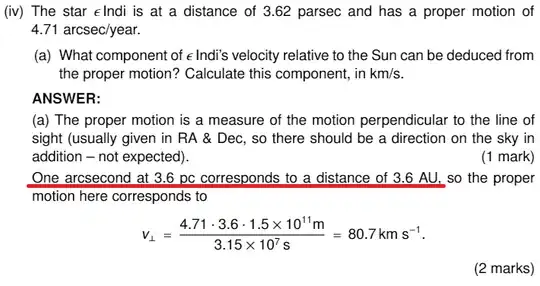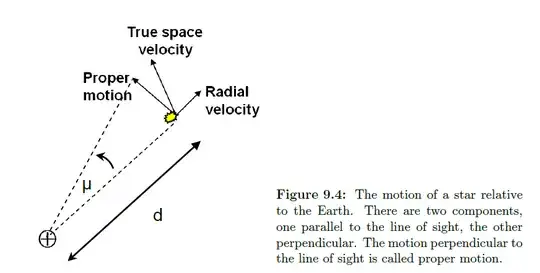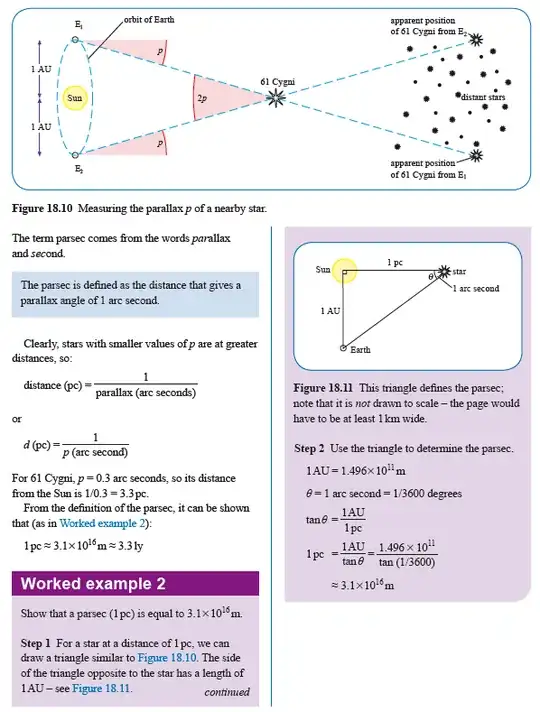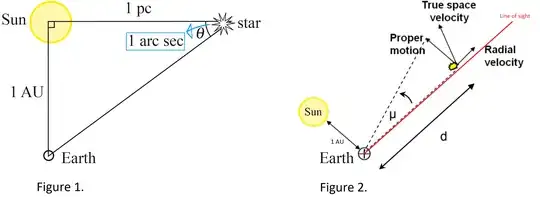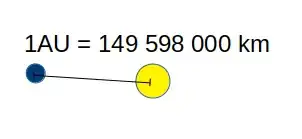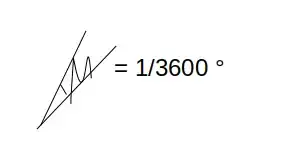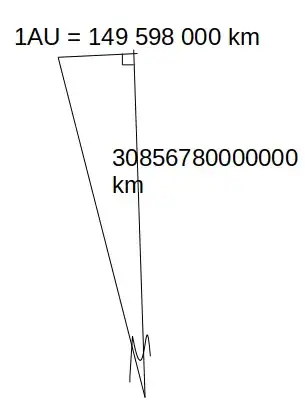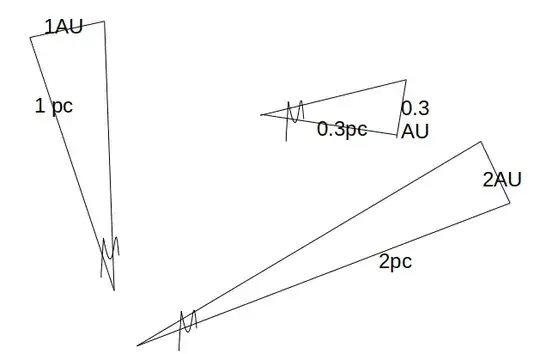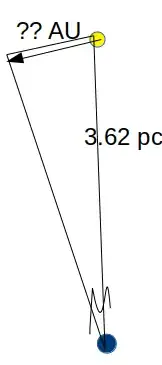I trying to understand the author's answer to this question:
I don't understand the part underlined red. How does 3.6pc mean 3.6AU? It says a "distance of 3.6AU", but doesn't say what is being measured to or from. So until I understand this, that calculation of $v_{\perp}$ makes no-sense to me.
After searching the internet and then this exchange site, I stumbled upon this question which is pretty much asking the same thing I am in this question. I don't understand part of one of the answers given to this post by @Profrob:
The definition of Parallax is that the 1 AU radius of the Earth's orbit around the Sun causes an angular change of 1 arcsecond in the apparent position of a star that is 1 parsec distant. But this definition can be extended to any angular displacement. Thus if a star is 1 pc away, a proper motion displacement of $x$ arcseconds/year means it is moving at $x$ AU/year. If it is at a different distance we just scale up by the distance in parsecs.
In the diagram above (which I borrowed from the question I linked) the Earth is facing along the line of sight towards a star that is moving perpendicular to the line of sight with transverse velocity, $v_{\perp}$. The problem however is that in the answer given by @Profrob he mentions that "a proper motion displacement of $x$ arcseconds/year means it is moving at $x$ AU/year" but according to page 268 of this textbook (Physics 2) by OCR published by Cambridge University Press:
In the image within the worked-example 2 box, the parsec is being measured from the Sun to the star, not from the Earth to the star which is the case for the proper motion diagram at the start of this question. That is the first problem, the second problem is that the proper motion, $\mu$, in the proper motion diagram at the start of this question is being measured from the LOS (line of sight, in red below) of the Earth connecting the moving star (with line segment $d$ (pc) in arcsec), I have made two figures below to illustrate my confusion:
In figure 1, the situation is fine as the mean Earth-Sun distance is opposite the angle of interest, $\theta$, of 1 arcsec. But the Sun is nowhere near the moving star with proper motion $\mu$, last time I checked it's next to the Earth (which is why I placed it next to the Earth in figure 2.)! So how can 'a proper motion displacement of $x$ arcseconds/year mean the star is moving $x$ AU/year'?
So to wrap this up why is $$v_{\perp}=\frac{4.71\cdot 3.6\cdot 1.5\times 10^{11}\mathrm{m}}{3.15\times 10^7\mathrm{s}}=80.7\,\mathrm{km}\,\mathrm{s^{-1}}?$$
P.S. Apologies if I don't respond straight away to potential comments and/or answers as it took ages just to write this post and now too tired so need sleep, goodnight.
